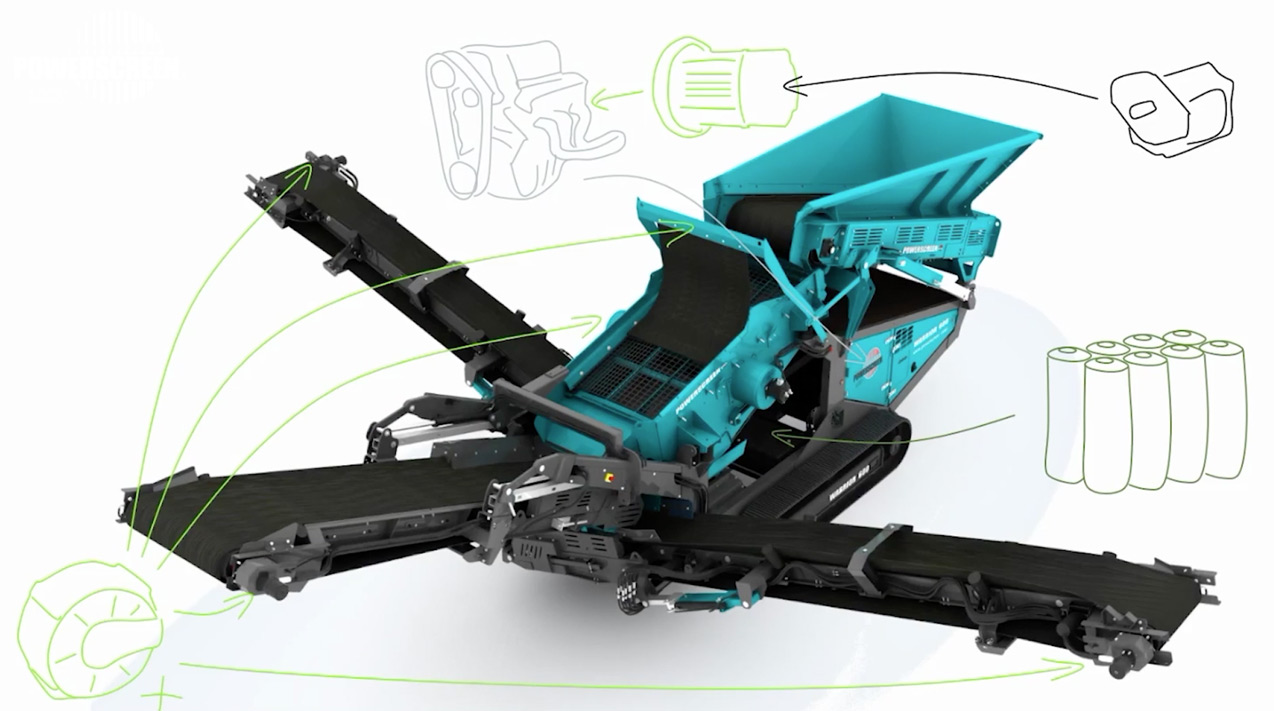Powerscreen has a brand-new concept for the future of crushing and screening: the Eco-Warrior battery powered screener. Working closely with automotive technology and using top-of-the-range, hyper-efficient drives and intelligent control systems, the Eco-Warrior battery powered screener has been designed to deliver on the powerful screening action of Powerscreen machines, while being a self-charging, or plug-in, model that features a simple, quiet engine with no after-treatment requirements. The required engine size has been cut in half compared with the diesel hydraulic unit and the battery pack can mean emission-free running or give a power boost.

Neil Robinson, Powerscreen product and applications manager, said, “To the best of our knowledge this is the first battery powered screener in the world and has been clocking up testing hours since it was built in 2019. It still delivers on the powerful screening action that Powerscreen machines are famous for, and we are now exploring taking it from concept to mainstream.”
Powerscreen said it is responding to the industry’s decarbonization challenge by providing solutions that work toward minimized environmental impact and greater sustainability.
“Some may view this topic as a recent trend, but for Powerscreen, decarbonization is multi-faceted and has always been at our core,” Robinson said. “The Powerscreen mobile concept has always contributed towards decreasing the carbon footprint per tonne of material produced. This is done by reducing unnecessary material handling of hauling and loading material to static plants in aggregate production or in the ability to recycle and reuse material at point of use, for example in roadbuilding projects where sub-base material is produced in situ. Using stockpiling conveyors as part of a track mobile set-up is another perfect example of how-to cut-out unnecessary double handling, reducing fuel consumption and therefore carbon production.”
Powerscreen has also evolved its product range to reduce environmental impact by making its crushing and screening equipment as fuel efficient as possible, using direct drive systems for its crushing range and improving engine capabilities and drive-line design for its screening range.
Robinson explained, “Direct drive systems are proven to be 13% to 18% more fuel efficient when compared with hydrostatic, resulting in significantly less carbon emissions, while improvements to our screening range has reduced engine speeds from 2,200 rpm to 1,800 rpm, which not only means cleaner engines with less emissions, but also reduced fuel usage and therefore carbon produced. For example, a typical mid-size screener running at 1,000 hours per year, has a fuel usage reduction of approximately 450 liters, which equates to 1.2 tonnes less of carbon produced annually.”
Another important tool for fuel efficiency is Powerscreen Pulse, in-depth machine telematics that helps customers see how and where their machines are being operated, understand fuel consumption and carry out fault-finding activities to ensure optimized performance. Powerscreen, www.powerscreen.com
